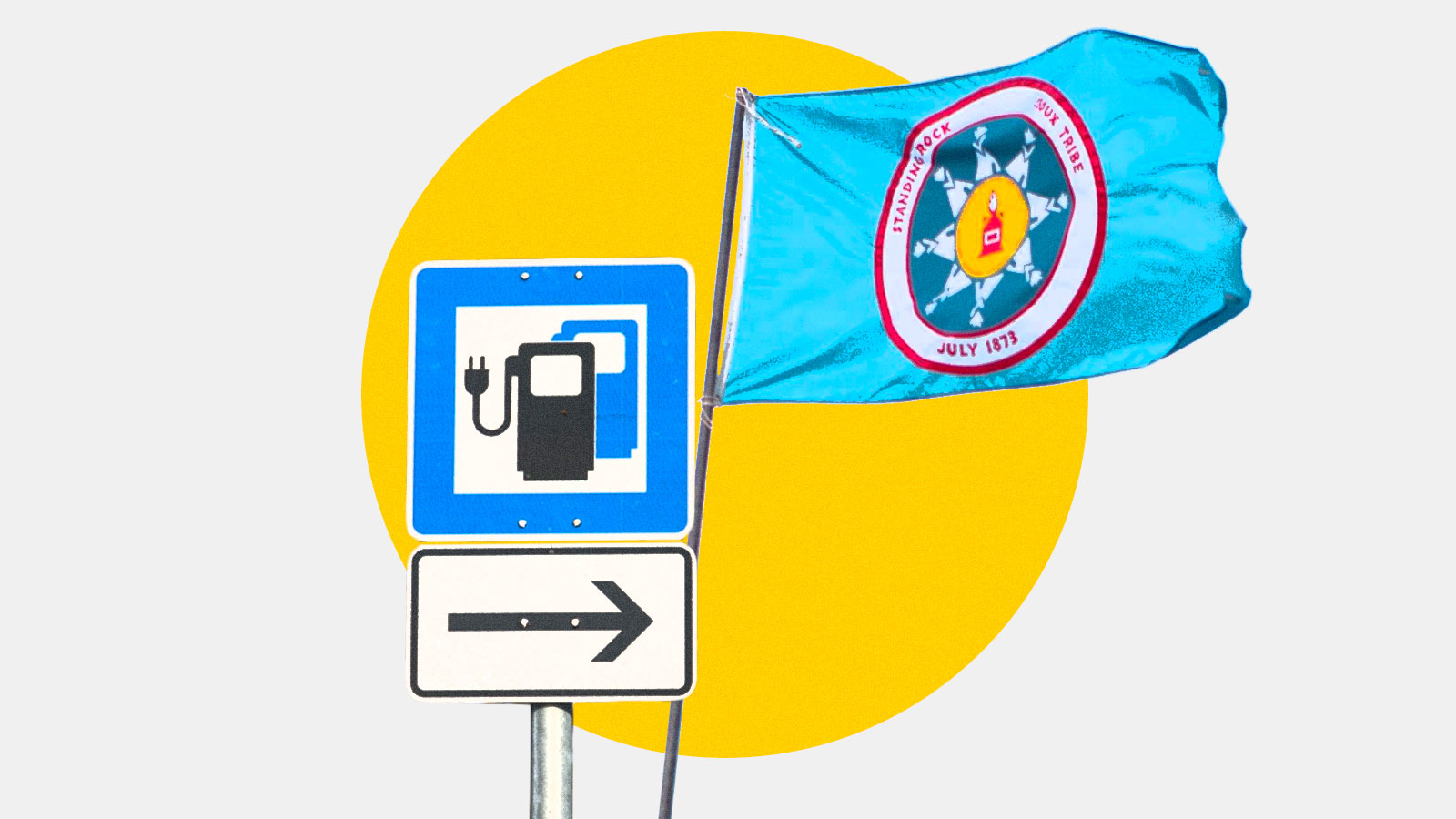The U.S. Department of Energy has announced more than $6.6 million in funding to create an electric vehicle charging network for tribes in the Midwest.
The money was awarded to Native Sun Community Power Development, an Indigenous-owned nonprofit based in Minneapolis, Minnesota, and the Standing Rock Renewable Energy Power Authority, a public power corporation created by the Standing Rock Sioux Tribe along the border of North and South Dakota. The funds will be used to purchase vehicles, install more than 120 charging stations, and pay for 52 outreach events over the next three years to educate and encourage the adoption of EVs by Indigenous communities.
The project offers a different narrative for the tribes, which have been engrossed in pipeline battles in recent years. Red Lake played a key role in opposing Line 3 this year, and Standing Rock was the site of large protests in 2016 against the Dakota Access Pipeline.
“With all the protesting we did, I just felt this was our answer,” said Robert Blake, a member of the Red Lake Band of Ojibwe Indians and the executive director of Native Sun Community Power Development. “It gives people a decision: You can stay on fossil fuels, or you can move to electric.”
In addition to promoting EV use on reservations, the charging stations will be placed on non-native land too, Blake told Grist. The network will expand Minnesota’s electric vehicle charging network more north, and help in North and South Dakota, two states with some of the least EV infrastructure in the country.
The group is also looking to see if they can power the charging stations using renewable energy. Part of that strategy includes developing a proposal to build a 12-megawatt solar farm in Red Lake to power the entire charging network. Blake and his partners have already purchased land for the project.
Beyond creating a new legacy for the tribes based on renewable energy, Blake said the network is an economic opportunity as well. Placing EV chargers at casinos or tourist spots, for example.
Work on the inter-tribal EV charging network is expected to start in 2022. In addition to Blake, there are several other partners on the project, including: Red Lake Fishery, the American Lung Association, and the Minnesota Clean Cities Coalition.
Funding for the network was part of nearly $200 million awarded by the Department of Energy to 25 different projects aimed at reducing vehicle emissions. Transportation is the most carbon polluting sector in the United States, accounting for nearly a third of emissions. The initiative will bring the Department of Energy one step closer to achieving the Biden administration’s goal to have half of all vehicle sales be zero-emissions by 2030. Other projects funded by the $200 million include building out an EV economy in low-income Appalachia and a national workplace charging program.
Ramzey Smith, a spokesperson for the Department of Energy, told Grist that the agency hopes the charging network, which could potentially be used by 23 Indigenous nations that share geography with Minnesota and the Dakotas, will demonstrate the benefits of EVs and could help similar projects throughout the U.S.
Blake told Grist that with the ongoing pipeline fights and losses, “We feel like our treaty rights have been violated.” So they’re taking action in a different way.
“This is our way of fighting back against the pipelines, fighting back against the fossil fuel industry,” he said. “Whether we’re building the electric vehicle charging network, solar farms, energy efficient projects, whatever it is, native people are going to try to reduce their reliance on fossil fuels because we know that that’s what’s killing our mother. We know that’s killing the planet.”



